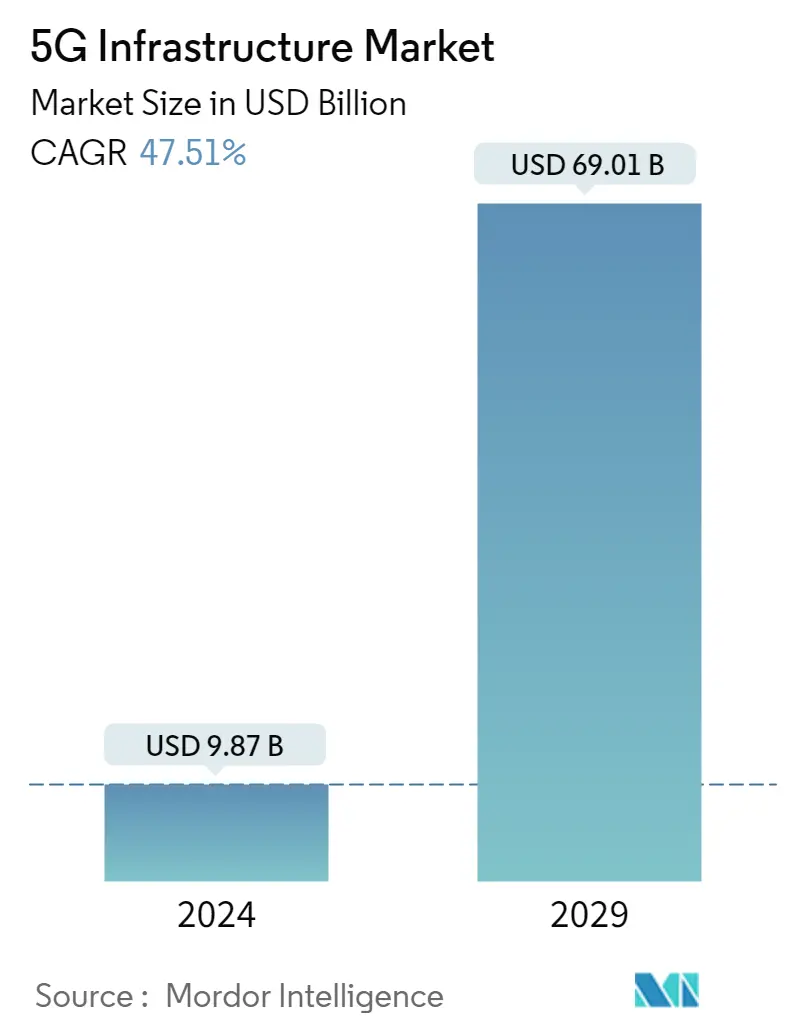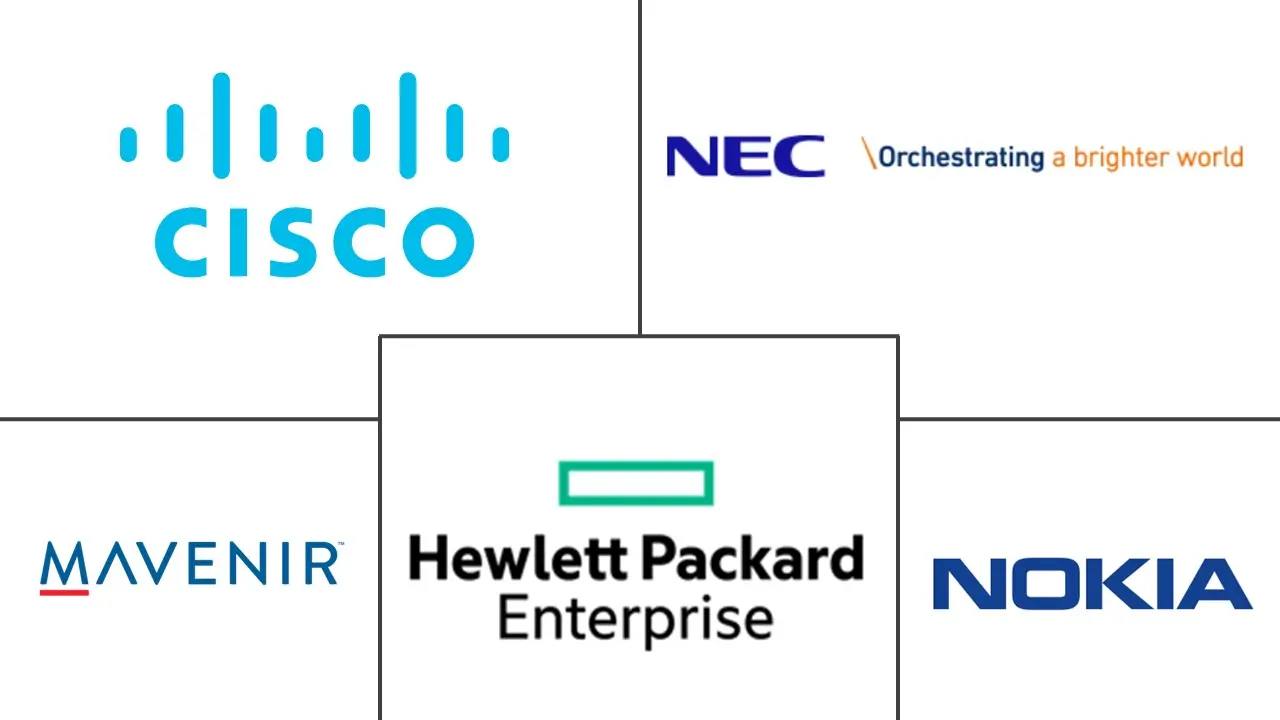Market Size of 5G Infrastructure Industry

| Study Period | 2019 - 2029 |
| Market Size (2024) | USD 9.87 Billion |
| Market Size (2029) | USD 69.01 Billion |
| CAGR (2024 - 2029) | 47.51 % |
| Fastest Growing Market | Asia Pacific |
| Largest Market | Asia Pacific |
Major Players
*Disclaimer: Major Players sorted in no particular order |
Need a report that reflects how COVID-19 has impacted this market and its growth?
5G Infrastructure Market Analysis
The 5G Infrastructure Market size is estimated at USD 9.87 billion in 2024, and is expected to reach USD 69.01 billion by 2029, growing at a CAGR of 47.51% during the forecast period (2024-2029).
- The market is driven by government initiatives towards the deployment of 5G and advancement in new technologies like iot, smart cities, and many more, pushing the market players to develop new services/solutions to capture the market share.
- 5G technology offers a significantly lower latency rate, the delay between receiving and sending information. This decrease in end-to-end latency improves user experiences and creates new opportunities for innovative use cases. Also, there is a trend of Ultra-Reliable Low Latency Communications (URLLC), a subdivision of 5G network architecture that enables efficient scheduling of data transfers and caters to various advanced services across applications such as factory automation, the industrial internet, smart grid, autonomous driving, and or robotic surgeries. Hence, demand for lower latency rates among applications above is significantly boosting the growth of the global 5G infrastructure market.
- According to GSMA Intelligence Mobile Economy Report 2023, 5G will underpin future mobile innovation and services, building on ongoing deployments and adoption. 5G adoption will reach 17% this year, reaching 54% (equivalent to 5.3 billion connections) by 2030. The technology will add almost USD1 trillion to the global economy in 2030, spreading benefits across all industries. Such a huge rise in 5G adoption would drive the studied market.
- Further, in smart cities, 5G technology has the potential to enhance public security and safety significantly. Smart city systems can gather and analyze massive volumes of data from several sources, including video security cameras, intelligent traffic lights, and other iot devices, using the fast and responsive 5G network. For instance, Las Vegas is testing three pilot projects, with the government allocating USD 500 million to find ways to connect the entire city by 2025. The increase in the number of smart city projects undertaken by governments influences the demand for 5G infrastructure.
- The deployment of 5G networks requires significant infrastructure investments, including installing new base stations, small cells, and fiber optic cables. Compared to previous generations of cellular networks, 5G infrastructure deployment involves a denser network architecture due to its reliance on smaller cell sizes and increased network capacity. This densification increases the infrastructure requirements and overall capital expenditure, leading to high initial costs for network operators and service providers. This is expected to challenge the market's growth.
- Telecom operators expanded the offering of their 5G connection for several countries during the pandemic. For instance, in March 2021, Philippines-based Globe Telecom announced that it would accelerate its 5G Roaming rollout to other countries in the Middle East and Asia. Globe is set to open its 5G connection to visiting customers of Singtel of Singapore, CSL Hong Kong, and Ooredoo of Kuwait. In the post-pandemic era, the market is expected to grow further.
